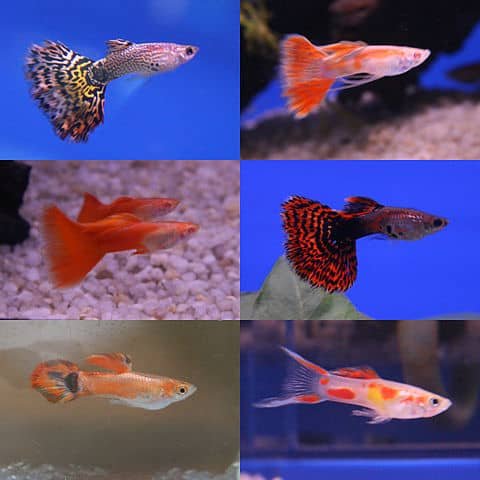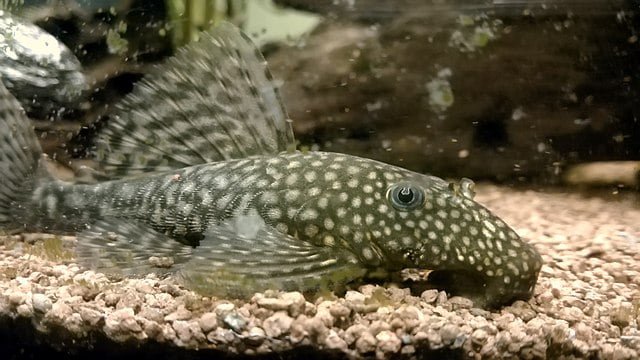Bielefeld University researchers publish systematic review and meta-analysis on mosquitofish.
In mosquitofish, of the genus Gambusia, male fish are smaller than females – sometimes only half the size. Biologists had previously assumed that smaller male mosquitofish had at least some reproductive advantages. Researchers from the transregional collaborative research centre NC³ at Bielefeld University have shown in a systematic review and meta-analysis that larger mosquitofish are actually more successful at reproduction: they can, for instance, better challenge their rivals; they produce more sperm; and they are preferred by female fish. The re-searchers are presenting their findings in the Journal of Animal Ecology.
Mosquitofish are small fish with nondescript coloring of the genus Gambusia, which contains some 45 species. While female mosquitofish can be up to 7 centimetres long, males are often just about 4 centimetres long. Their sizes, however, do vary and these fish are therefore often used to study sexual selection based on body size. “Even though there have been many studies on whether body size in males confers reproductive advantages, the findings have been mixed,” says Alfredo Sánchez-Tójar, a biologist who is working in the transregional collaborative research centre NC³ (SFB-TRR 212) in a subproject investigating the behavioural ecology of individualised niches using meta-analyses (subproject D05).
Studies have indeed shown that larger male fish are better at driving off rivals, and that females prefer larger males when it comes to mating. Male mosquitofish, however, usually circumvent the cooperation of the female by forcing copulation. Because male fish are smaller, they are more agile and are better at lying in wait, making them more successful in these forced mating strategies.
For their systematic review and meta-analysis, the NC³ researchers evaluated 36 different studies that had investigated the correlation between body size and reproductive performance in male Gambusia fish. ‘Our work demonstrates that larger male Gambusia fish actually have greater reproductive success than their smaller counterparts. This correlation is surprising – we had assumed that the advantages of small male fish would carry greater weight,’ says Sánchez-Tójar.
‘This meta-analysis brings together many years of research on this topic and enables biologists to study additional questions in this field in the future. Such systematic reviews and meta-analyses are becoming ever more important, in part because the scientific literature is constantly increasing,’ says Professor Dr. Klaus Reinhold, a member of Bielefeld University’s Faculty of Biology and the head of the Evolutionary Biology research group as well as the NC³ -Subproject D05. Reinhold and Sánchez-Tójar conducted the systematic review and meta-analysis together with two other researchers: Dr. Nicholas Patrick Moran, from the National Institute of Aquatic Resources (DTU Aqua) at the Technical University of Denmark, and Bora Kim, from the Konrad Lorenz Institute of Ethology at the University of Veterinary Medicine in Vienna. Moran and Kim both previously participated in the collaborative research centre NC³ .
In their meta-analysis, the researchers included studies in which the correlation between body size and reproductive performance was not part of the study’s research question, but data on this was still collected. Using pre-registration, the researchers documented their hypotheses and methods in advance before performing the actual analysis. ‘Such strategies are important for a review to be meaningful – and for the results to be as unbiased as possible,’ says Sánchez-Tójar.
Stay Always Informed
Join our communities to instantly receive the most important news, reports, and analysis from the aquaculture industry.
The studies under review had measured reproductive performance in many different ways: data had been collected, for example, on which males were preferred by female Gambusia, whether copulation was successful and whether it resulted in paternity, or on the quality and quantity of sperm. ‘Our work shows that the positive correlation between reproductive performance and body size is robust in all of these areas,’ says Sánchez-Tójar. The largest effect size is seen in mate selection by females: the larger the male fish, the more likely it is for female fish to mate with him. ‘This is particularly interesting because the influence of female mate selection in mosquitofish had previously been neglected in the literature, as the focus was often placed on coercive mating,’ explains Sánchez-Tójar.
The scientists hope to make a mark on future research with their study. ‘In some categories of reproductive performance, the findings are very heterogenous, which also has to do with study design. In some cases, the experimental environment is not complex enough because, for example, vegetation is missing or temperatures and periods of light exposure are unrealistic,’ says Kim, who is the lead author on the study. Moran adds: ‘This systematic review and meta-analysis provides a solid foundation upon which to further refine research questions and methods.’
The aim of subproject D05 is to produce these types of meta-analyses on the topics under investigation in the NC³ transregional collaborative research centre. NC³ stands for ‘Niche Choice, Niche Conformance, Niche Construction.’ This collaborative research centre includes locations at Bielefeld University, the University of Münster, and the University of Jena and investigates ecological niches at the individual level, bringing together behavioral biology, ecology, and evolutionary biology with theoretical biology and philosophy. The German Research Foundation (DFG) has been funding NC³ since January 2018, initially for a period of four years, with a total of 8.5 million Euro.
Contact:
Dr. Alfredo Sánchez-Tójar, Bielefeld University
Faculty of Biology
Telephone: +49 521 106-2727
Email: alfredo.sanchez-tojar@uni-bielefeld.de
Original publication (open access):
Bora Kim, Nicholas Patrick Moran, Klaus Reinhold, Alfredo Sánchez-Tójar: Male size and reproductive performance in three species of livebearing fishes (Gambusia spp.): a systematic review and meta-analysis. Journal of Animal Ecology, https://doi.org/10.1111/1365-2656.13554
Source: Bielefeld University
Editor at the digital magazine AquaHoy. He holds a degree in Aquaculture Biology from the National University of Santa (UNS) and a Master’s degree in Science and Innovation Management from the Polytechnic University of Valencia, with postgraduate diplomas in Business Innovation and Innovation Management. He possesses extensive experience in the aquaculture and fisheries sector, having led the Fisheries Innovation Unit of the National Program for Innovation in Fisheries and Aquaculture (PNIPA). He has served as a senior consultant in technology watch, an innovation project formulator and advisor, and a lecturer at UNS. He is a member of the Peruvian College of Biologists and was recognized by the World Aquaculture Society (WAS) in 2016 for his contribution to aquaculture.




